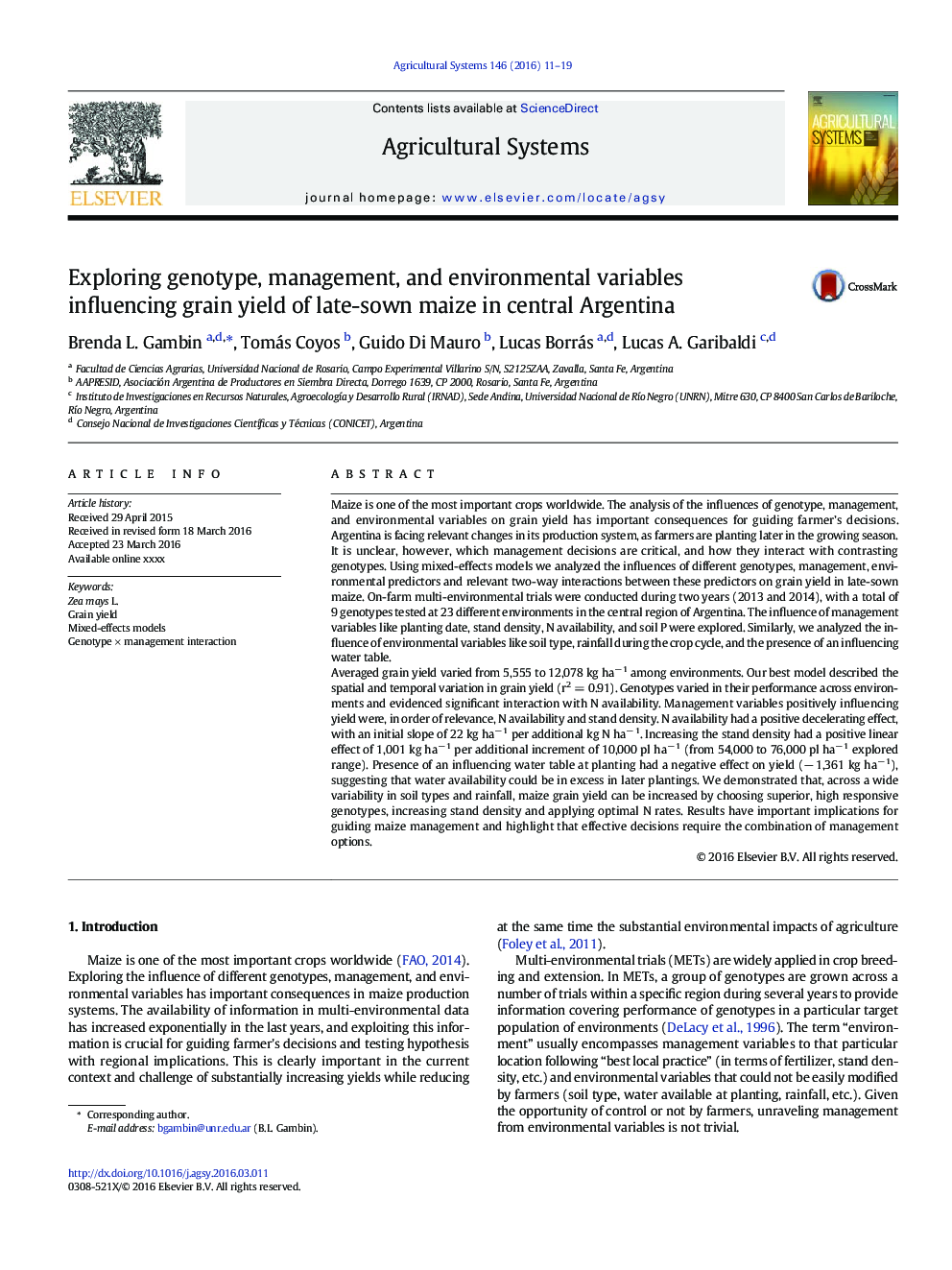| کد مقاله | کد نشریه | سال انتشار | مقاله انگلیسی | نسخه تمام متن |
|---|---|---|---|---|
| 6368373 | 1623224 | 2016 | 9 صفحه PDF | دانلود رایگان |
عنوان انگلیسی مقاله ISI
Exploring genotype, management, and environmental variables influencing grain yield of late-sown maize in central Argentina
ترجمه فارسی عنوان
بررسی متغیرهای ژنوتیپ، مدیریتی و محیطی که بر عملکرد دانه ذرت در اواخر کاشت تاثیر می گذارند در مرکز آرژانتین
دانلود مقاله + سفارش ترجمه
دانلود مقاله ISI انگلیسی
رایگان برای ایرانیان
کلمات کلیدی
موضوعات مرتبط
علوم زیستی و بیوفناوری
علوم کشاورزی و بیولوژیک
علوم کشاورزی و بیولوژیک (عمومی)
چکیده انگلیسی
Averaged grain yield varied from 5,555 to 12,078 kg haâ 1 among environments. Our best model described the spatial and temporal variation in grain yield (r2 = 0.91). Genotypes varied in their performance across environments and evidenced significant interaction with N availability. Management variables positively influencing yield were, in order of relevance, N availability and stand density. N availability had a positive decelerating effect, with an initial slope of 22 kg haâ 1 per additional kg N haâ 1. Increasing the stand density had a positive linear effect of 1,001 kg haâ 1 per additional increment of 10,000 pl haâ 1 (from 54,000 to 76,000 pl haâ 1 explored range). Presence of an influencing water table at planting had a negative effect on yield (â 1,361 kg haâ 1), suggesting that water availability could be in excess in later plantings. We demonstrated that, across a wide variability in soil types and rainfall, maize grain yield can be increased by choosing superior, high responsive genotypes, increasing stand density and applying optimal N rates. Results have important implications for guiding maize management and highlight that effective decisions require the combination of management options.
ناشر
Database: Elsevier - ScienceDirect (ساینس دایرکت)
Journal: Agricultural Systems - Volume 146, July 2016, Pages 11-19
Journal: Agricultural Systems - Volume 146, July 2016, Pages 11-19
نویسندگان
Brenda L. Gambin, Tomás Coyos, Guido Di Mauro, Lucas Borrás, Lucas A. Garibaldi,
